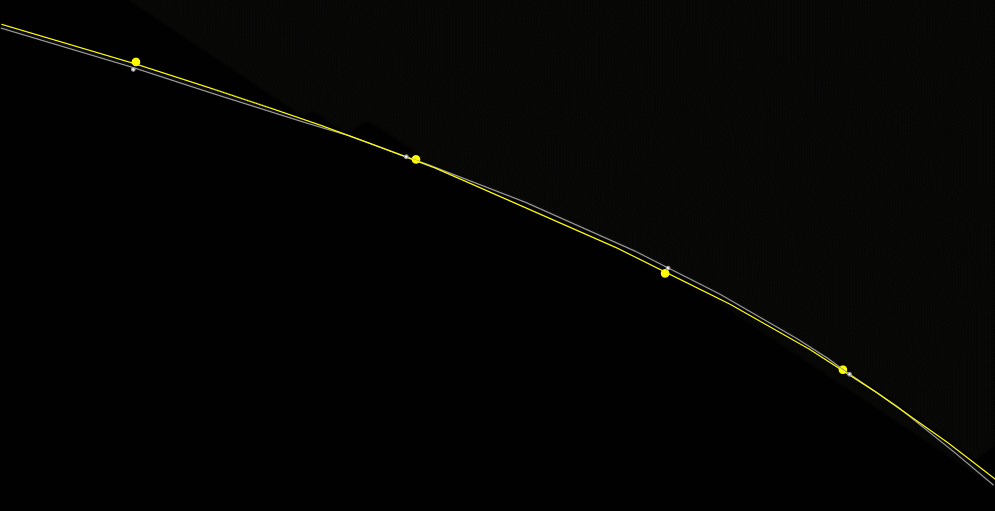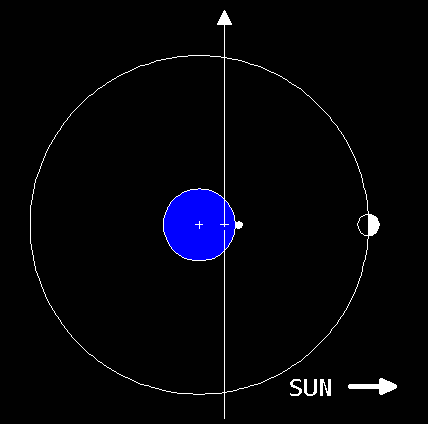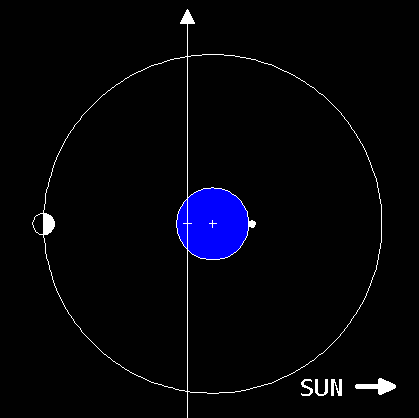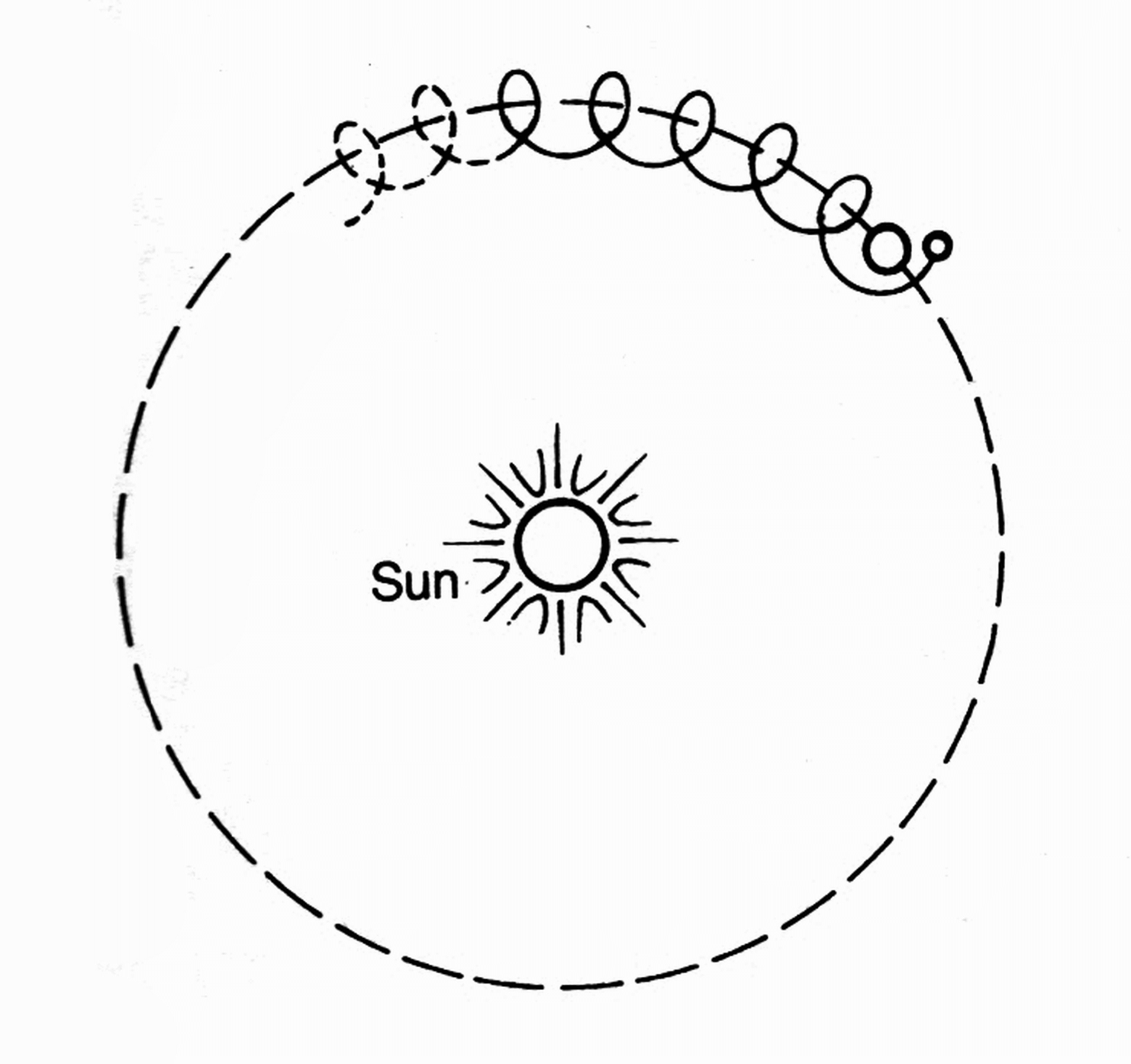Loopy Physics.
Our closest celestial neighbor, the moon, presents two puzzles for your consideration.
|
Puzzle 1. Physics textbooks are lavishly illustrated, which is one reason they cost so much. But illustrations can mislead. Here's one from a 1997 book by a major university publisher. The accompanying description reads:
...both the earth and the moon are in nearly circular orbits about the sun. They perturb each other's orbits—viewed from the sun, the moon performs a tiny "rosette" about the earth's orbit (see Figure).Even text can mislead. You can see why we do not credit the source, for the authors and publisher would likely rather remain anonymous. What is wrong with this diagram and this text? There may be several errors. How should these be corrected? The authors do make one important and correct point that is seldom understood by students.
Puzzle 2. Standing on the earth at the equator, are you closer to the sun at high noon at the time of new moon, or at high noon a half-month later at the time of full moon? Why?
Feedback is appreciated from readers. Email dsimanek@lhup.edu. If you have a favorite physics puzzle that is not well known, not easily found on the web, or in the many published physics problem books, send it along. Include your answer, too if you have one. If used, we'll credit you. I especially like puzzles that can be solved with insightful and simple arguments, preferably with minimal mathematics. As this puzzle illustrates, textbook misconceptions often make good puzzles.
Answer to puzzle 1.
The moon orbits earth once every 29.53 days with respect to the sun (the synodic period). So it makes only about 12.4 orbits in a year. Fig. 1 suggests many more than that.Fig. 1 is clearly not to scale. The loops are much too large for the moon's orbit around the earth. But does the moon actually make such a loopy path, crossing itself every month?
In fact, the moon's path never crosses itself, so the description of its path as a "rosette" is clearly wrong. The true path, to scale, looks like this:
 |
| Fig. 2. Earth and moon paths, to scale. Their sizes are not to the same scale. From the Wikipedia. |
|---|
Textbooks and popular science publications ought to more liberally use the picture caption disclaimer "Not to scale". But scale isn't the only problem here.
The striking thing about this is that the moon's path around the sun is nearly circular, never crosses itself and is always concave toward the sun. Earth and moon both orbit the sun in nearly the same path as they swing around their common center of mass like a pair of gracefully whirling ice dancers. The center of mass of the earth-moon system (the barycenter) is within the body of the earth, at a distance of 4671 km from earth's center. The earth's radius is 6378 km. The barycenter makes an elliptical, but still near-circular, orbit around the sun. The earth and moon both orbit the barycenter, these being small periodic perturbations on their orbits—a slight waviness. Neither path is loopy. This book got one thing right. It says "...both the earth and the moon are in nearly circular orbits about the sun." Unfortunately the authors went astray in the rest of their explanation, and the artist who drew the picture didn't get the correct message.
Answer to puzzle 2.
The barycenter is again important here. The earth is closer to the sun at full moon. At noon at full moon, the center of the earth is 2×4671 = 9342 km closer to the sun than it is at noon at new moon. So you are also that much closer to the sun at noon at the time of full moon.
 |
 |
| Fig. 3. Positions of earth and moon at time of new moon (left) and full moon (right). + is the center of earth. − is the earth-moon barycenter. The white dot is an observer at noon on the equator. Schematic. Not to scale. | |
|---|---|
The earth's axis is tilted 23.5° with respect to the earth's orbital plane, and the moon's orbital plane is also tilted 5.145°, so your distance from the sun depends on where on earth you are standing and the moon's position in its orbit at that time. We didn't ask for a quantitative answer. You are welcome to puzzle that out. Nor will we speculate how much sooner you'd get a tan lying on the beach at noon when the moon is full. But, if you avoid getting bogged down in messy trigonometery (and a few "gotchas"), you will conclude that these details won't affect our answer.
Return to Physics puzzles.
Return to the Donald Simanek's home page.
